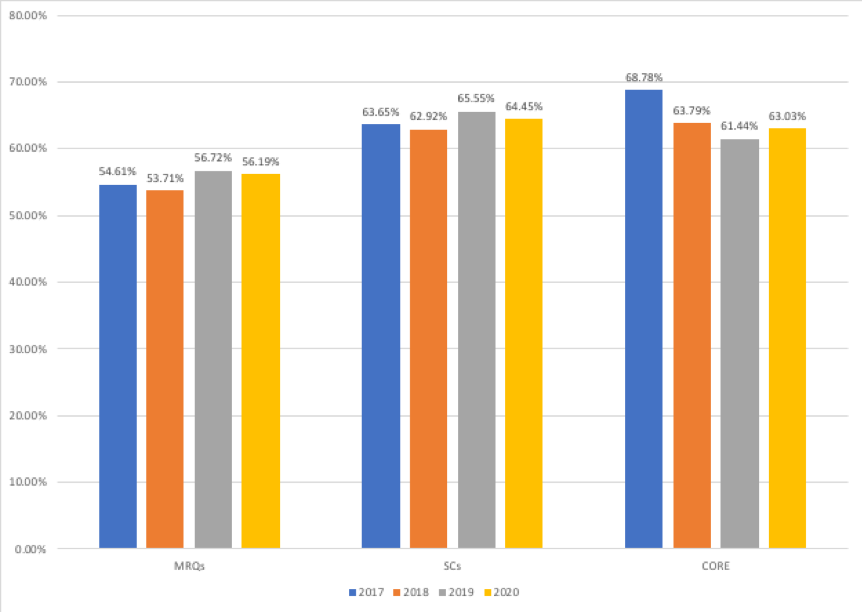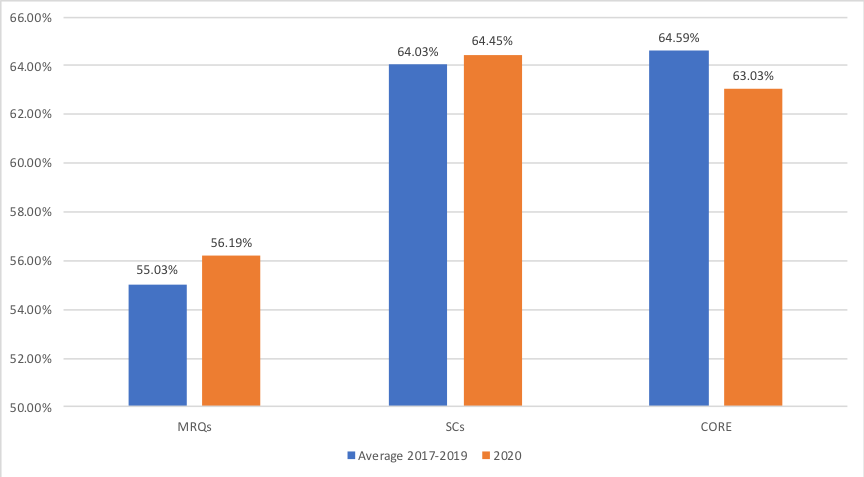Bulletin #5 – 2.

See also other articles:
EDiR REPORT 2020: STANDARDS OF EXCELLENCE
Due to this new organisational approach, there were some concerns whether this new system would affect the quality and standards of the EDiR examination and its results. In light of the above, a comparison (2017-2020) between the previous examinations and the EDiR e-examinations held in 2020 was carried out (see figures below).
The EDiR examination consists of three sections: the Multiple Response Questions (MRQs), the Short Cases (SCs) and the Clinically Oriented Reasoning Evaluation (CORE) and a score for each part of the examination is calculated for each candidate.
| 2017 | 2018 | 2019 | 2020 | |
| Pass rate | 67.00% | 66.11% | 65.57% | 69.05% |


It can be seen that the average score for all three parts of the EDiR e-examination in 2020 is consistent with the average score in previous years.
The pass rate, which is the percentage of candidates who pass the examination, is also calculated for each examination. Additionally, there is a standard minimum pass mark for the MRQs and SCs sections (50%) and for the CORE (55%). In 2020, there has been a slight increase of 2-3% compared with previous years (see figures below). However, since the number of candidates was smaller than usual this year, this percentage (2-3%) corresponds to having fewer candidates (10-15).
| 2017 | 2018 | 2019 | 2020 | |
| Pass rate | 67.00% | 66.11% | 65.57% | 69.05% |
This new e-examination approach has also led to a different demographic distribution of candidates taking the EDiR. Between 2017 and 2019, 61% of candidates were ESR corresponding members and 39% were ESR full members. Conversely, in 2020, more than 90% of the candidates were ESR corresponding members and 4% were ESR full members. The number of different nationalities that have sat the EDiR has also changed from 45 in 2019 to less than half (23) in 2020.